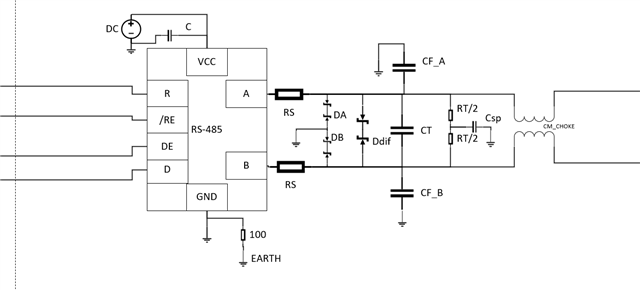Other Parts Discussed in Thread: THVD1420, THVD1449, , SN65HVD888
Hello Expert,
We are testing CS (Conduction Immunity) Certification for EMC Test, there is a problem that the communication was cut off, So we are trying to replace w/ TI product.

1. Do you have any recommend part for passing EMC Test?
2. Question
-. In the above circuit, please check how to handle the ground of RS485 IC, TVS, and Thyristor IC.
In case of TVS and Thyristor IC, is it correct to connect to Earth or connect to GND of RS485 IC?
-. Also, if you have an application note that can be referenced, please share it.
Best Regards,
Michael




